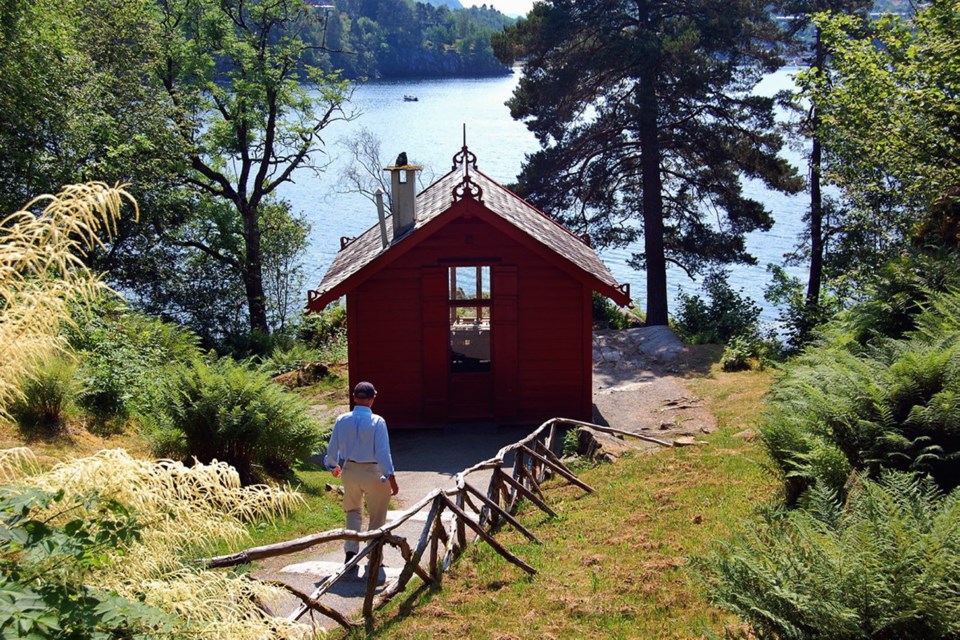As a traveller, I find myself visiting the homes of lots of dead people. Some are over the top (Louis XIV's Versailles near Paris); some are haunting (the Anne Frank House in Amsterdam); others inspire poetic reflection (William Wordsworth’s Dove Cottage in England’s Lake District).
Many of my favourites are the home studios of artists — painters, sculptors, writers, architects, composers. There’s something about these special places that conjures the strange magic of creative work. Luckily for travellers, many have become museums that welcome visitors.
Perhaps the most high profile of Europe’s home studios is Claude Monet’s. The spiritual father of Impressionism, Monet spent 40 years cultivating his garden and art at Giverny, 90 kilometres northwest of Paris.
Monet’s actual skylighted studio is now a gift shop, but the artist’s real workspace was his five-acre garden. A master of colour, Monet treated his garden like a canvas, choosing and planting his peonies, irises, and lavender bushes for maximum effect. In turn, the flower beds inspired some of his most iconic artworks. He often painted en plein air — outside — sometimes on a footbridge that overlooked a Japanese-style pond choked with his precious water lilies. Strolling the pathways here is like witnessing an Impressionist painting come to life.
The concept of the artist’s studio got its start in the Renaissance, when established masters maintained art workshops and taught apprentices. When Florence’s city fathers started building a new cathedral in the late 1200s, they founded the Opera del Duomo (Cathedral Workshop), where the sculptures for the church and its bell tower were crafted (opera is the Italian word for “work”).
Over time, the typical studio became less a communal workshop and more a place of solo industry and reflection. Norway’s greatest composer, Edvard Grieg, maintained just such a classic artist’s retreat. He spent his last 22 summers, until 1907, at the Victorian-style home he called Troldhaugen, just outside Bergen. Quiet, lush and secluded, the dreamy setting was ideal for soaking up inspirational fjord beauty.
But the house was often bursting with family and friends. To escape the hubbub, Grieg built a simple, one-room studio at the water’s edge, and every day he’d lock himself inside to be sure he’d get something done. The cabin had everything he needed and no more: an upright piano, a desk overlooking the water and a couch for naps. Gazing at his rustic desk, his little piano and the dramatic fjord scenery out the window, you can understand how Grieg’s music so powerfully evokes the natural wonder of Norway.
Artists from as far back as the Baroque era figured out that the studio could double as a sales room. When Rembrandt’s career took off in Golden Age Amsterdam, the great Dutch painter moved to an expensive home with a well-lighted studio. He would paint his famous Night Watch here, among many other masterpieces.
The artist lined the walls floor-to-ceiling with his paintings, then invited potential patrons in to browse. Opening up the studio turned out to be good for business, so much so that Rembrandt also had a small office to keep up with his paperwork. (He wasn’t terribly good at it, and eventually went bankrupt.) If you visit his reconstructed house, you can see how he used its rooms to display art to buyers.
Perhaps the most unusual home studio I’ve toured is Salvador Dali’s place near Cadaqués, Spain (an easy day trip from Barcelona). As a kid, Dalà spent summers in this sleepy port town, and the eccentric artist came back years later with his wife, Gala. Together, they built a labyrinthine compound that climbs up a hill overlooking the Mediterranean.
Like Dali’s art, his home is offbeat, provocative and fun. The eccentric ambience, inside and out, was perfect for a Surrealist hanging out with his creative playmate and muse. This place, and his partnership with Gala, became so important to Dalà that when she died in 1982, he moved away and never returned (he died in 1989).
Whether you’re indulging in a fantasy in DalĂ-land or floating serenely above Monet’s water lilies, a trip to an artist’s home studio can be a highlight of any trip to Europe.
Rick Steves (ricksteves.com) writes European travel guidebooks and hosts travel shows on public television and public radio. Email him at [email protected] and follow his blog on Facebook.



